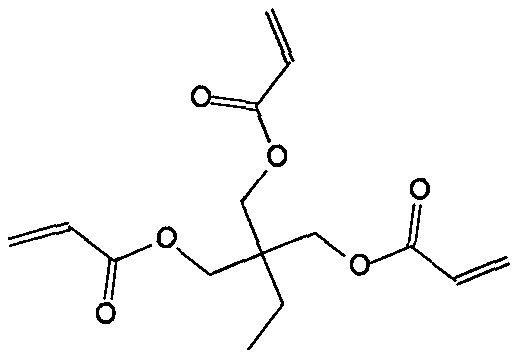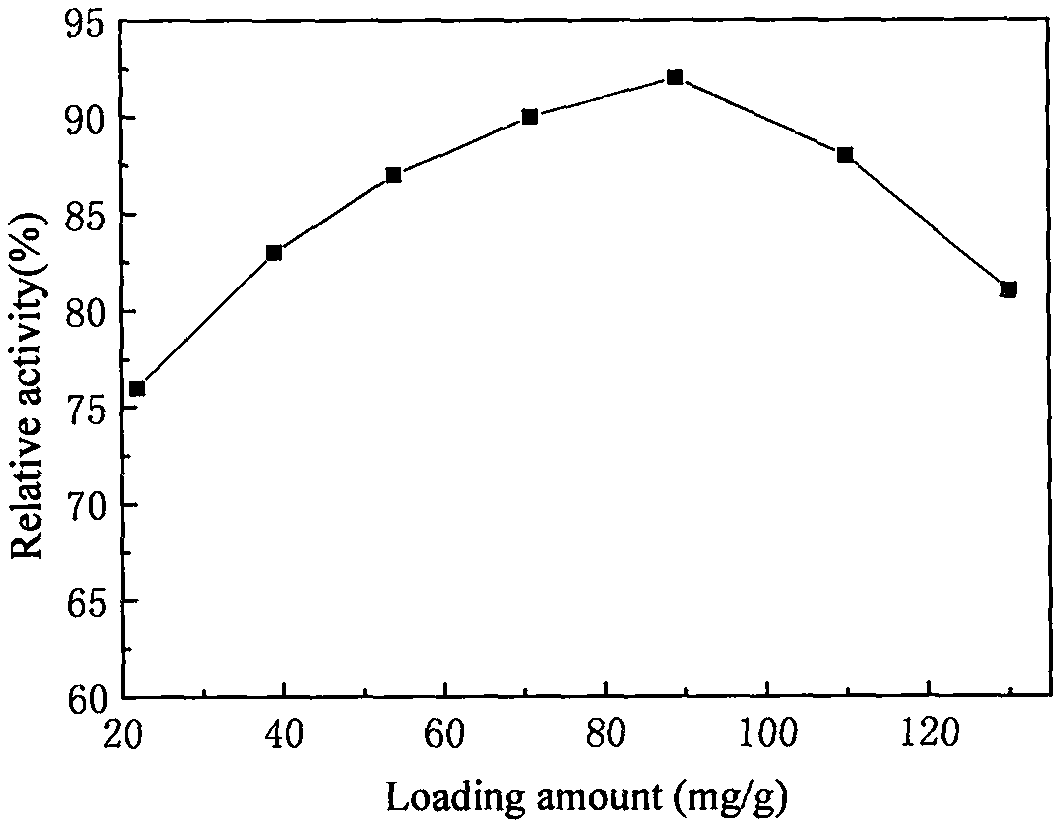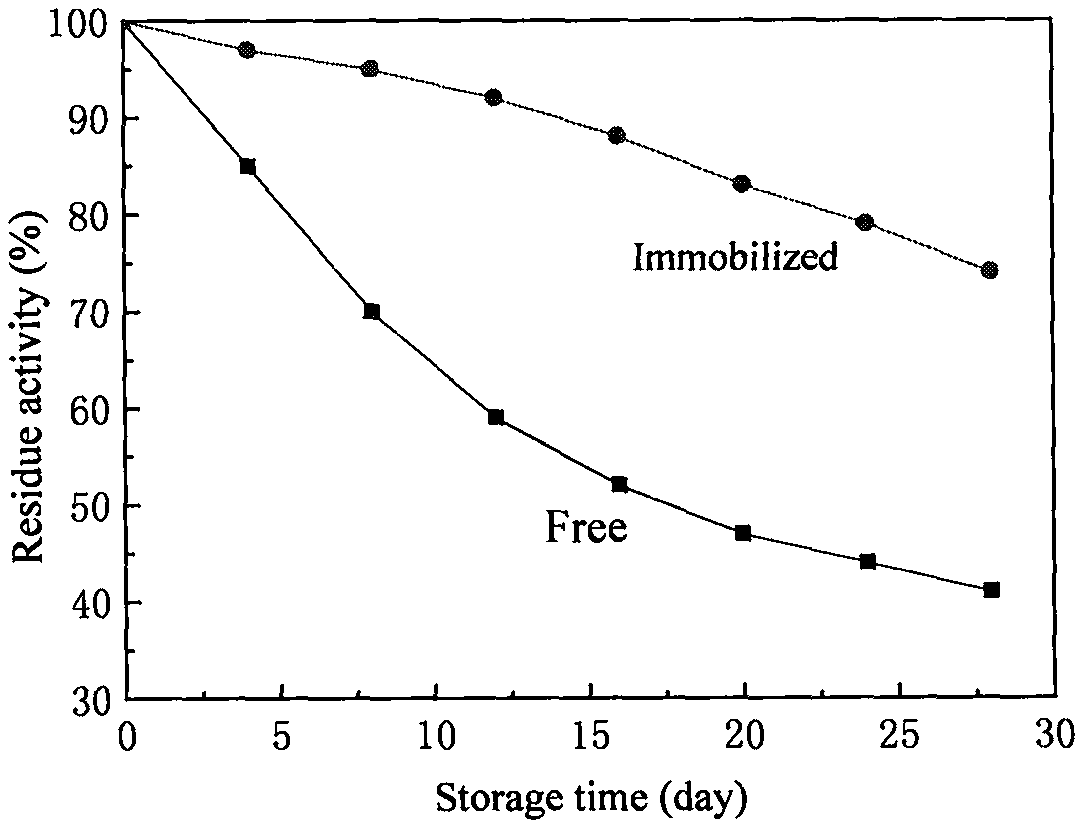Co-crosslinking immobilization method of tannase
A technology of tannase and co-crosslinking, applied in the field of co-crosslinking and immobilization of tannase, can solve the problems of high reaction activity, excessive cross-linking of enzymes, blocking of mass transfer channels, etc. Improve catalytic performance and improve the effect of microenvironment
- Summary
- Abstract
- Description
- Claims
- Application Information
AI Technical Summary
Problems solved by technology
Method used
Image
Examples
Embodiment Construction
[0016] Enzyme immobilization
[0017] 1) Bisphenol A epoxy resin (brand name is E-51, epoxy value is 0.51, number average molecular weight is 392), three kinds of components of methanol and diethylenetriamine are mixed according to the mass ratio of 2: 2: 1, Stir and react in the range of 25-35°C for 4-5 hours, pour the mixture into water, wash the precipitate repeatedly with water to remove methanol and a small amount of amine, then put it in a vacuum oven and dry it at room temperature to obtain an aminated epoxy resin;
[0018] 2) Add epoxy resin amides and β-cyclodextrin into water at a molar ratio of 1:2.1 to 1:2.3, heat and stir until all epoxy resin amides are converted into molecular complexes and dissolved in water, and keep the The total mass concentration of the aqueous solution is in the range of 5 to 6wt.%.
[0019] 3) dissolving tannase in a phosphate buffer solution with pH=6.5, and keeping the concentration of the enzyme in the range of 1.0-7.0 mg / mL;
[0020...
PUM
 Login to View More
Login to View More Abstract
Description
Claims
Application Information
 Login to View More
Login to View More - R&D
- Intellectual Property
- Life Sciences
- Materials
- Tech Scout
- Unparalleled Data Quality
- Higher Quality Content
- 60% Fewer Hallucinations
Browse by: Latest US Patents, China's latest patents, Technical Efficacy Thesaurus, Application Domain, Technology Topic, Popular Technical Reports.
© 2025 PatSnap. All rights reserved.Legal|Privacy policy|Modern Slavery Act Transparency Statement|Sitemap|About US| Contact US: help@patsnap.com



